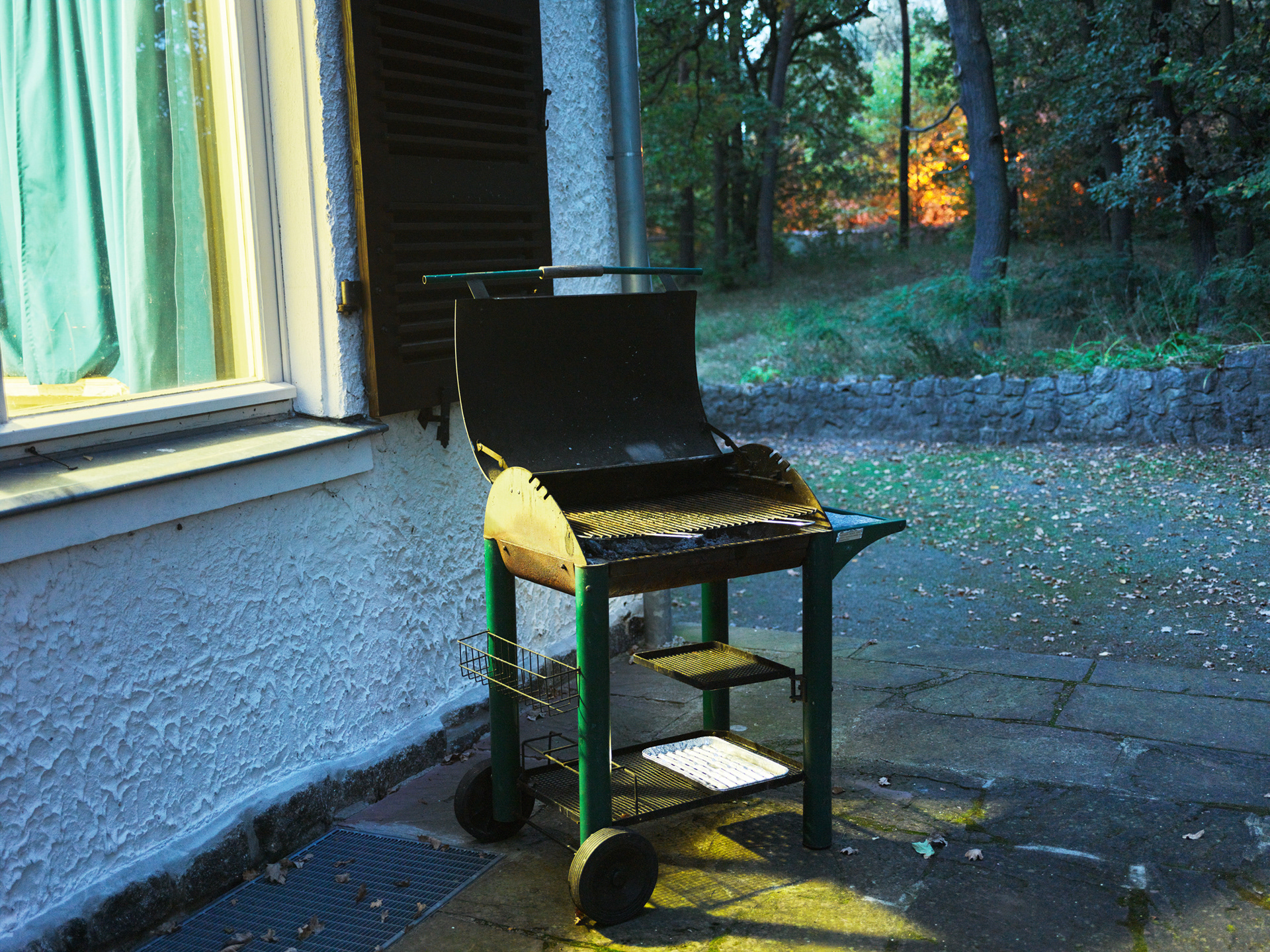Oświęcim, Poland 2014
Modern playground on the way from a prisoner disembarkment ramp, known as the Judenrampe, into Auschwitz-Birkenau. Transports of Jews sent to Auschwitz by the SS from all over German-occupied Europe arrived on that ramp.
Oświęcim, Poland 2014
According to plans from 1942, this house, built by the prisoners, was to become a new Auschwitz prisoner barrack. However, it never was due to the end of WWII and now serves as a residential building.
Oświęcim, Poland 2014
In front of the house of Auschwitz concentration camp commandant Rudolf Höss.
Oświęcim, Poland 2014
Former factory buildings of SS operated defense contractor Deutsche Ausrüstungswerke (DAW) where Auschwitz prisoners were subjected to forced labor. Nowadays it is a modern workshop on the former concentration camp site outskirts.
Sobibór, Poland 2014
Train track near the Sobibór extermination camp site.
Lublin, Poland 2014
At the entrance to the Majdanek concentration camp.
Dachau, Germany 2013
Hotel lobby beside the Dachau concentration camp site - the nearest option for visitors to stay overnight. Dachau concentration camp was the first of the Nazi concentration camps opened in Germany, intended to hold political prisoners.
Drancy, France 2015
Self-service laundry at the Cité de la Muette building. In 1940, German authorities decided to use this building as an internment camp for confining Jews who were later deported to the extermination camps. This public housing project still exists today and serves as a social housing - same purpose for which it had been built.

Flossenbürg, Germany 2014, Housing development built in 1958 at the site of the former prisoner barracks of Flossenbürg concentration camp.
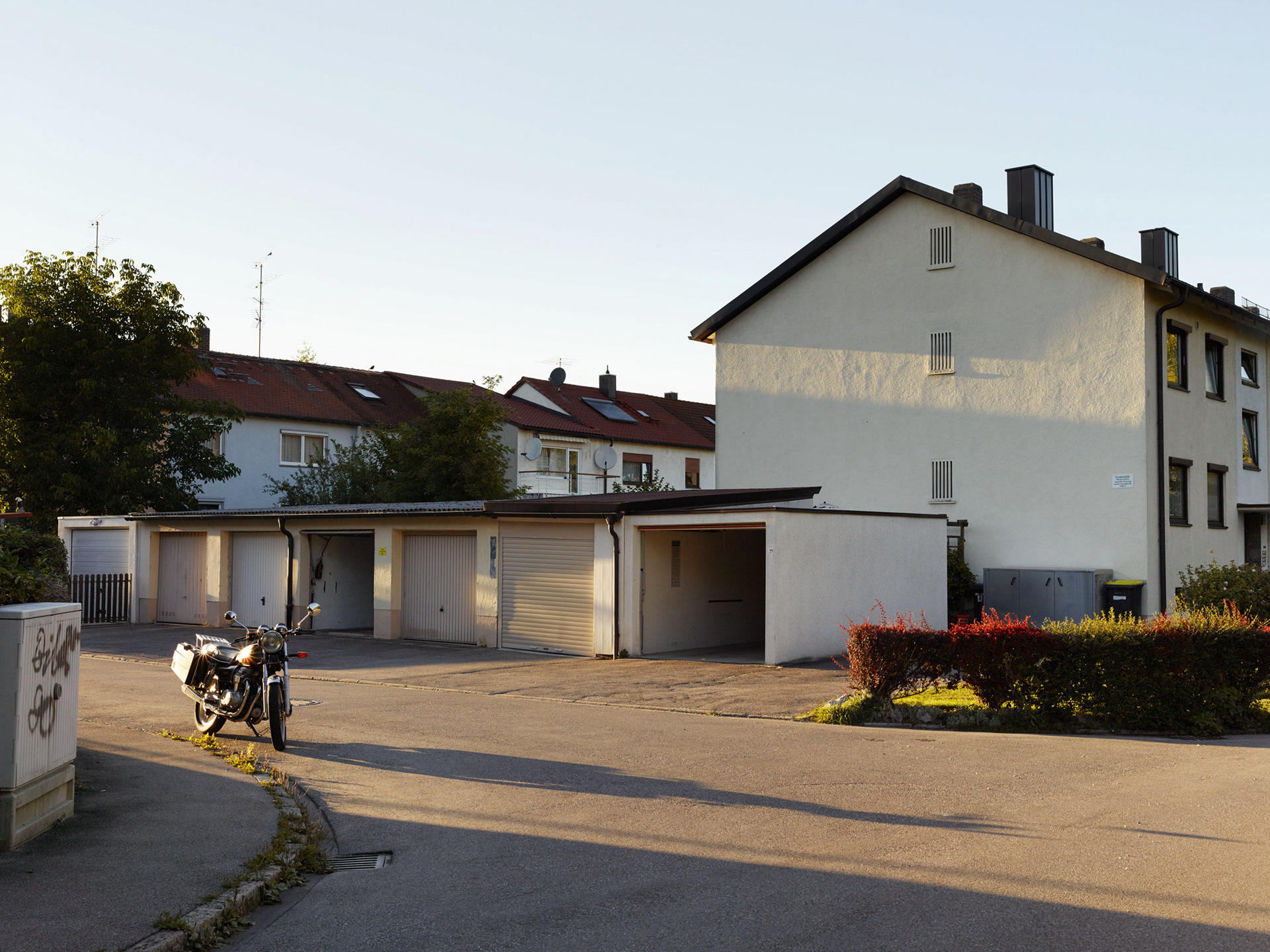
Dachau, Germany 2013, Residential area on the Dachau concentration camp site outskirts.
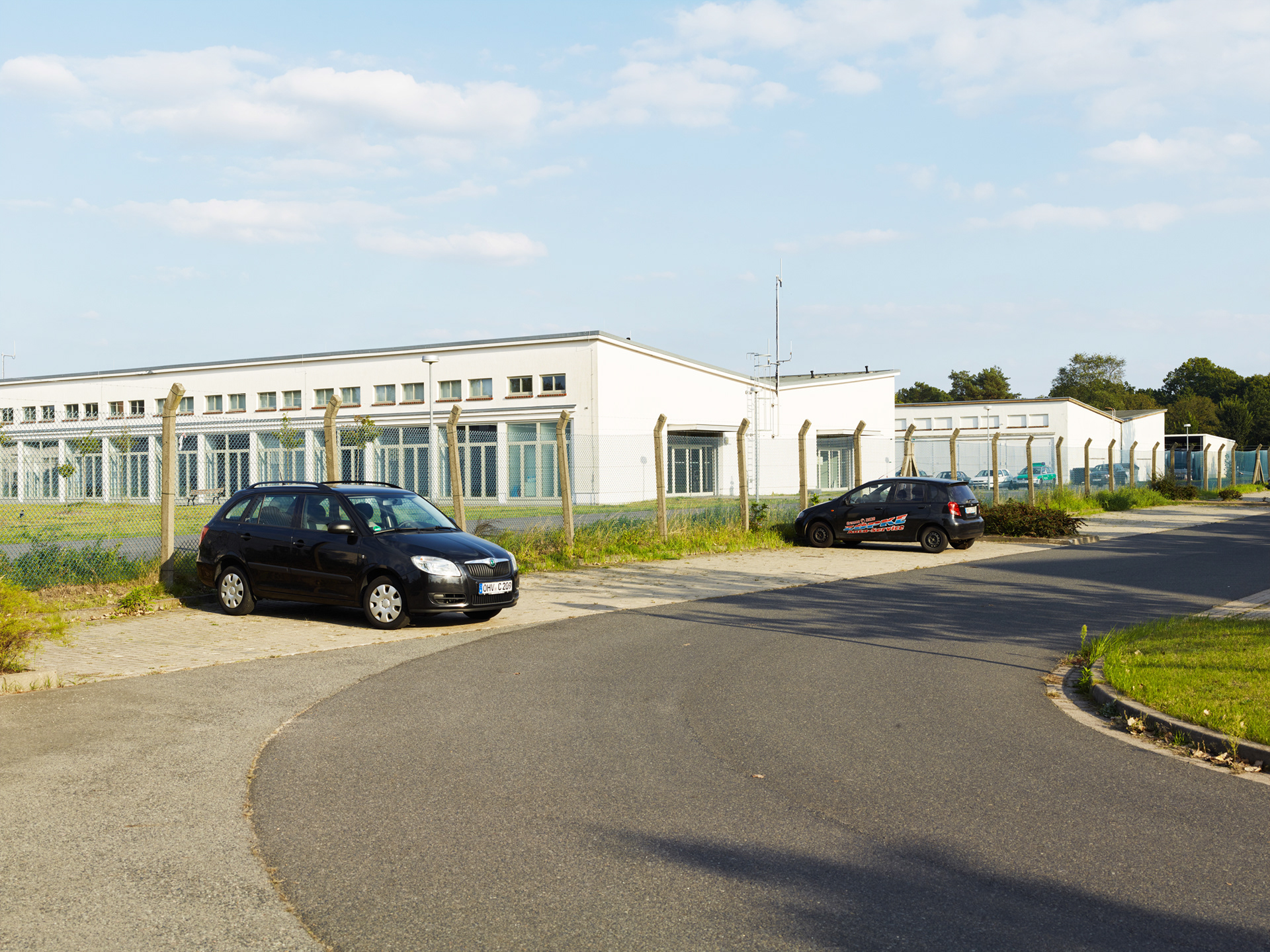
Oranienburg, Germany 2014, Brandenburg Police Academy buildings, formerly an SS-compound and integral part of the Sachsenhausen concentration camp.

Dachau, Germany 2013, Newly-built industrial workshops on the outskirts of the former Dachau concentration camp.

Treblinka, Poland 2014, View from former location of railroad tracks that leaded to the Treblinka extermination camp.

Sobibór, Poland 2014, Train track near the Sobibór extermination camp site.

Treblinka, Poland 2014, Bus stop, site of the former railway station in the town of Treblinka - last stop before transports with prisoners entered the extermination camp.

Natzwiller, France 2013, Former “Struthof Inn” dance-hall, once used as a gas chamber of Natzweiler-Struthof concentration camp.

Natzwiller, France 2013, Last curve on a mountain road before arriving to the Natzweiler-Struthof concentration camp.
Oranienburg, Germany 2014
Former Sachsenhausen concentration camp commandant’s house.
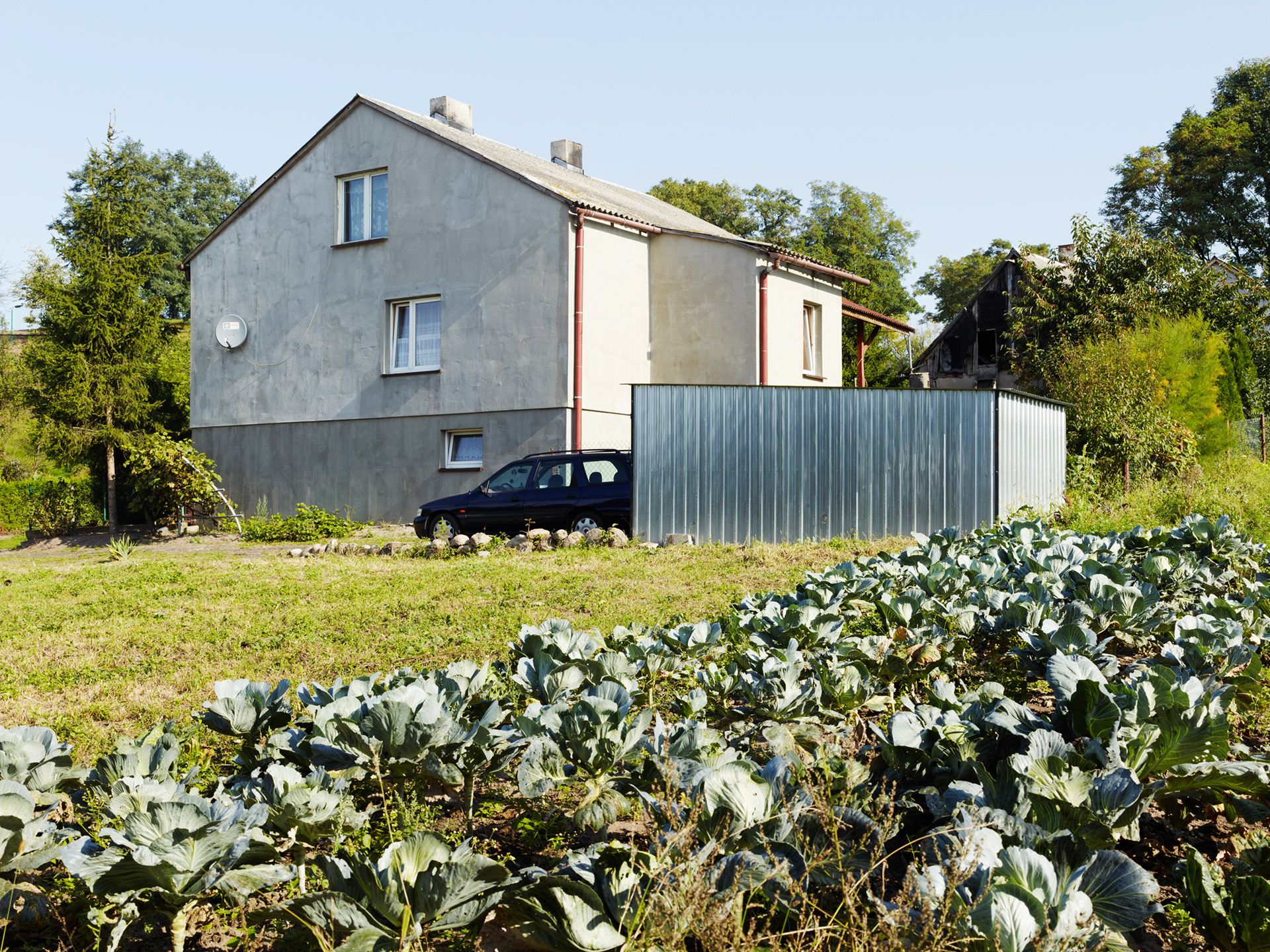
Chełmno nad Nerem, Poland 2014, Cabbage patch in residential garden near the former Chełmno extermination camp.

Sobibór, Poland 2014, Current archaeological site at the grounds of the Sobibór extermination camp.
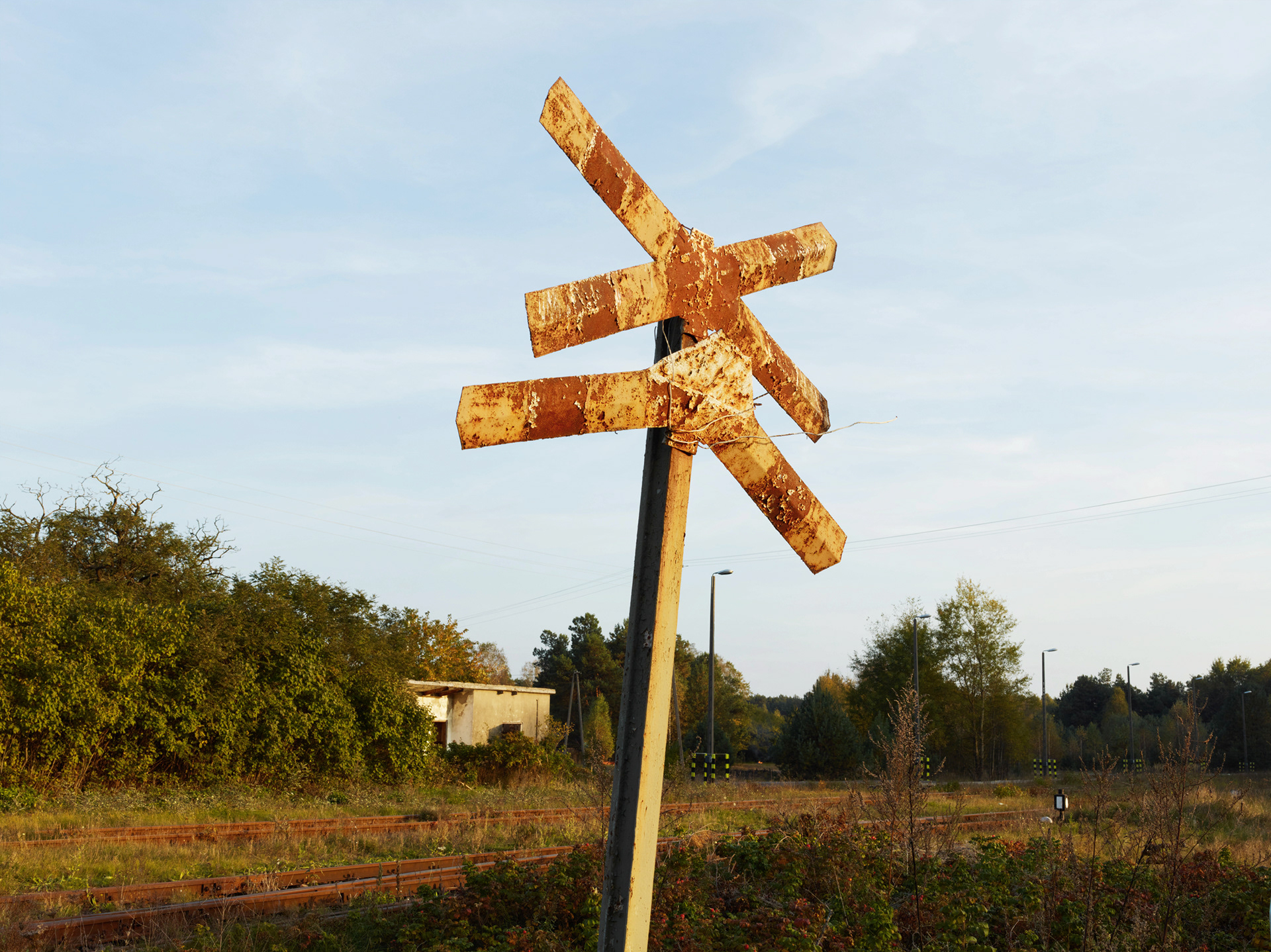
Sobibór, Poland 2014, Railroad crossing sign, Sobibór train station.

Oranienburg, Germany 2014, Bedroom in a hostel nearby Sachsenhausen concentration camp. It is the converted villa of self-titled “Concentration Camp Inspector” Theodor Eicke, influential figure in the establishment of the camp system.
